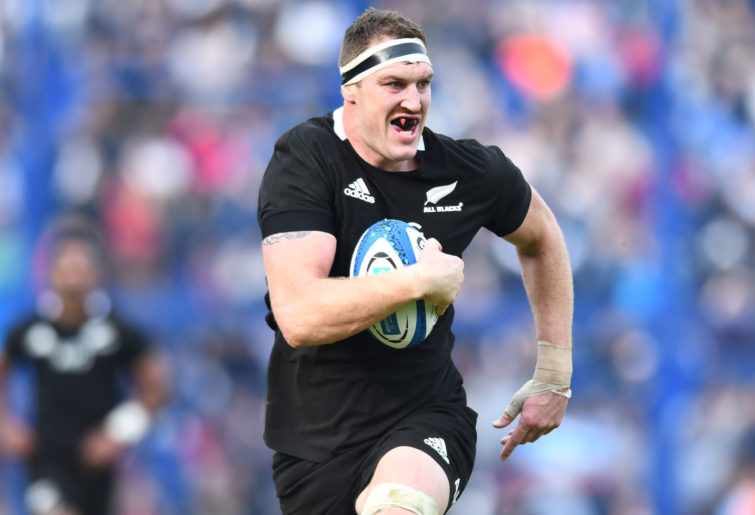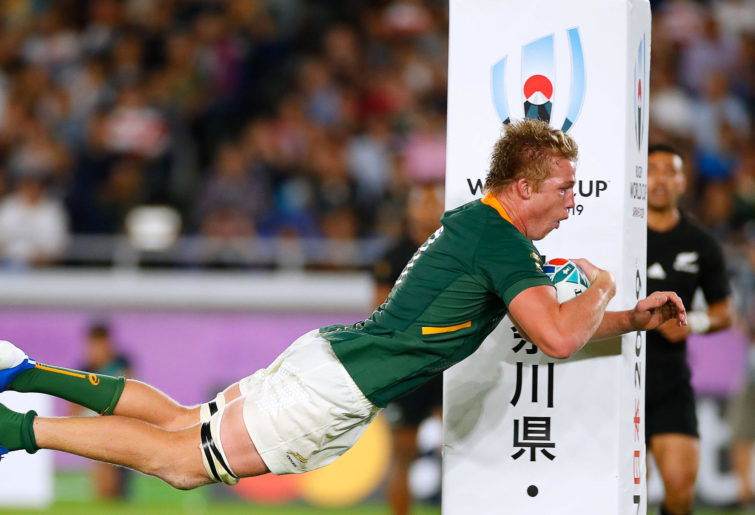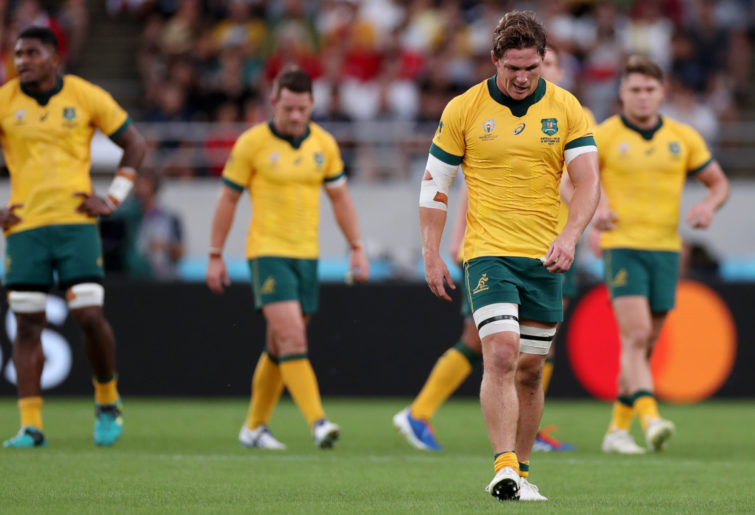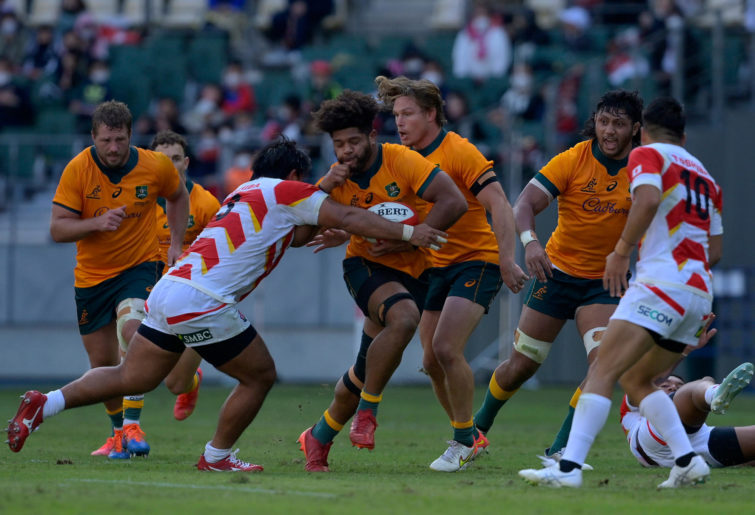The late adoption of professionalism has led to a rather unique cycle in how top professional teams are built.
As the game evolves and playing style trends change rapidly, there has been a fascinating focus on how a single position becomes critical to a team’s success. Let me provide a few examples.
At the turn of the century the main man was at first five-eighth (flyhalf or number ten), such as Andrew Mehrtens, Carlos Spencer, Stephen Larkham, and a rising Jonny Wilkinson. A team could not compete for top-class status without a top-class ten.
Through the 2000s, it was all about your openside flanker. This was the era that saw the emergence of Richie McCaw, Thierry Dusautoir, David Pocock and Schalk Burger, who dragged their sides forward with tenacity, work on the deck and link play.
The 2010s were the era of the second row, something I wrote about in an article a few years back, and how highly skilled, big work-rate locks like Brodie Retallick, Alun Wyn Jones and Eben Etzebeth were the highlight players everyone was talking about.

(Photo by Amilcar Orfali/Getty Images)
A new decade dawns and with it we might be seeing the rise of a new position of prominence: blindside flanker.
Now there’s going to be some tricky positional acrobatics here because what I consider to be the role of blindside flanker is by no means consistent across countries or even between domestic sides.
Also jersey numbers in the flanks wobble around a bit so it can get confusing trying to understand why a guy with six on his back in France or South Africa isn’t the blindside flanker.
So for argument’s sake I want to talk about the big guy in the back row; the one who is normally the most intimidating presence and who makes themselves felt through big runs, bigger tackles and general physical presence across the park, who can also add grunt at the scrum and maul and is hopefully a solid third lineout option to boot.
Who is the prototypical blindside flanker? Look no further than one of last generation, Jerome Kaino, and the currently unmatched Pieter-Steph du Toit.

(Odd Andersen/AFP/Getty Images)
These are the guys I hold up as being the pinnacle of blindside play and once I spent some time looking at both of them I was shocked at how similar their play really is.
Both are tall and heavy, with the ability to play in the second row, with du Toit being a whole size class bigger than even Kaino.
Both are mobile for their size without being rapid. Both can clean out a ruck with impact, run the hard yards in traffic and make metres in space, and both could be absolutely dominant in the tackle.
They combine a decent to excellent work rate with impact. They are genuine third lineout targets. Both teams they played in won World Cups and made it to the number one spot in the world.
With Kaino on the pine for various reasons, the All Blacks lacked the physical presence to win a Lions series. Without du Toit, South Africa looked decidedly anaemic in the recent Rugby Championship.
What’s particularly interesting about these two players, whose careers only briefly overlapped at international level, is that between the end of Kaino’s heyday and du Toit’s rise, the landscape of genuine blindsides seemed barren.
The selection of specialist locks on the blindside of the scrum rose to prominence across many sides with few genuine successes (du Toit being the most obvious outlier) and the selection of dual opensides became common, if not the new norm.
A quick note on Australia. Almost uniquely Australia has a tendency towards having their number eight play more like a traditional blindside.
Australia has often been successful with their big backrower in the eight jersey. Guys like Wycliff Palu, Toutai Kefu and Willie Ofahengaue, and even David Lyons and Matthew Cockbain, were all closer to traditional blindside flankers in their play than most other countries have at eight.

(Photo by Getty Images)
Pretty much everything I have to say about the blindside can be applied to Australia at eight.
The tide is definitely beginning to turn as coaches are cluing in to what they are missing without a traditional blindside flanker in the mix.
If you select a lock you get lots of work rate, a nice solid defence in the tight channels and a third lineout target.
But often you are sacrificing real impact on defence and attack as most locks lack the dynamism required to really bend the defensive line and make the big tackles behind the advantage line.
Similarly, if you select a second openside you often lose some physicality in the tight-loose, the ability to shift bigger bodies in the ruck and the strength to make metres in traffic.
Australia spent much of the last World Cup cycle missing these ingredients by playing two opensides and it cost them in the 2015 World Cup final and then more consistently over the following four years, culminating in a quarter-final exit in 2019.

(Photo by David Ramos – World Rugby/World Rugby via Getty Images)
New Zealand have struggled since the failed handover from Kaino to Liam Squire as Kaino’s powers waned. His discipline slipped and the replacements either never kicked into gear (Squire) or left for greener pastures (Steven Luatua).
South Africa went for years with hybrid six-seven players relying on their eight to bring the more physical aspects. England had a similar problem with guys like Chris Robshaw and James Haskell never quite bringing the required punch.
Team after team would chop and change between lock-six and six-seven style players without ever really landing on a guy to take them forward long term.
Enter the now and things are starting to change as a new crop of out-and-out blindside flankers are starting to pin down their position.
David Rennie hooked into an unusual part of the Australian psyche when he moved Rob Valetini from six to eight.
Playing the same game he always has, the number eight on his back seemed to have ignited his confidence and the performances followed. More proof that in Australia you want your big flanker at eight, I guess.

(Photo by Koki Nagahama/Getty Images)
South Africa have uncovered a revelation in du Toit, one of only two genuine lock-six players who can play the role well.
He was the deservedly named the best player in the world in the 2019 World Cup year, the first ever blindside flanker to win the accolade and perhaps ushering in this new era.
It was striking how unbalanced the Boks’ back row looked without him in the Rugby Championship this year.
England have relied on an extremely unusual back row for a long time, playing two opensides alongside the Australian-style number eight in Billy Vunipola.
Recent selections and the availability of Courtney Lawes (the only other genuine lock-six option who is better on the blindside) suggest they are moving towards a more traditional back-row balance, blindside included.
New Zealand have been hunting for the right six since Kaino left and are still trying to find the right candidate, but I suspect when they do it will improve their currently clunky back-row play out of sight.
The wheel has turned and after a cycle of blindside being a dumping ground, I suspect we are moving into a golden era where blindsides will be key selections and filling column inches for the next couple of years.

































































































